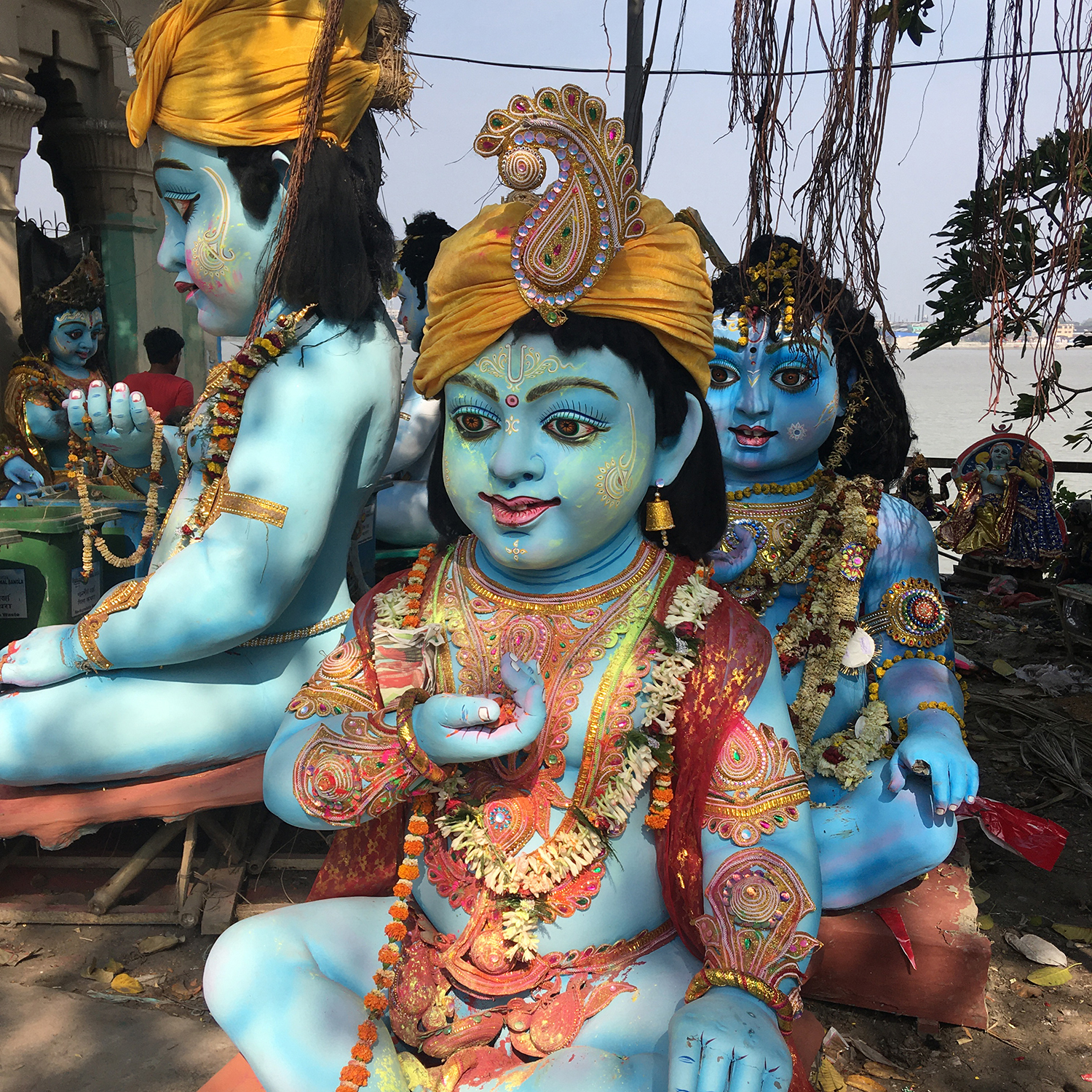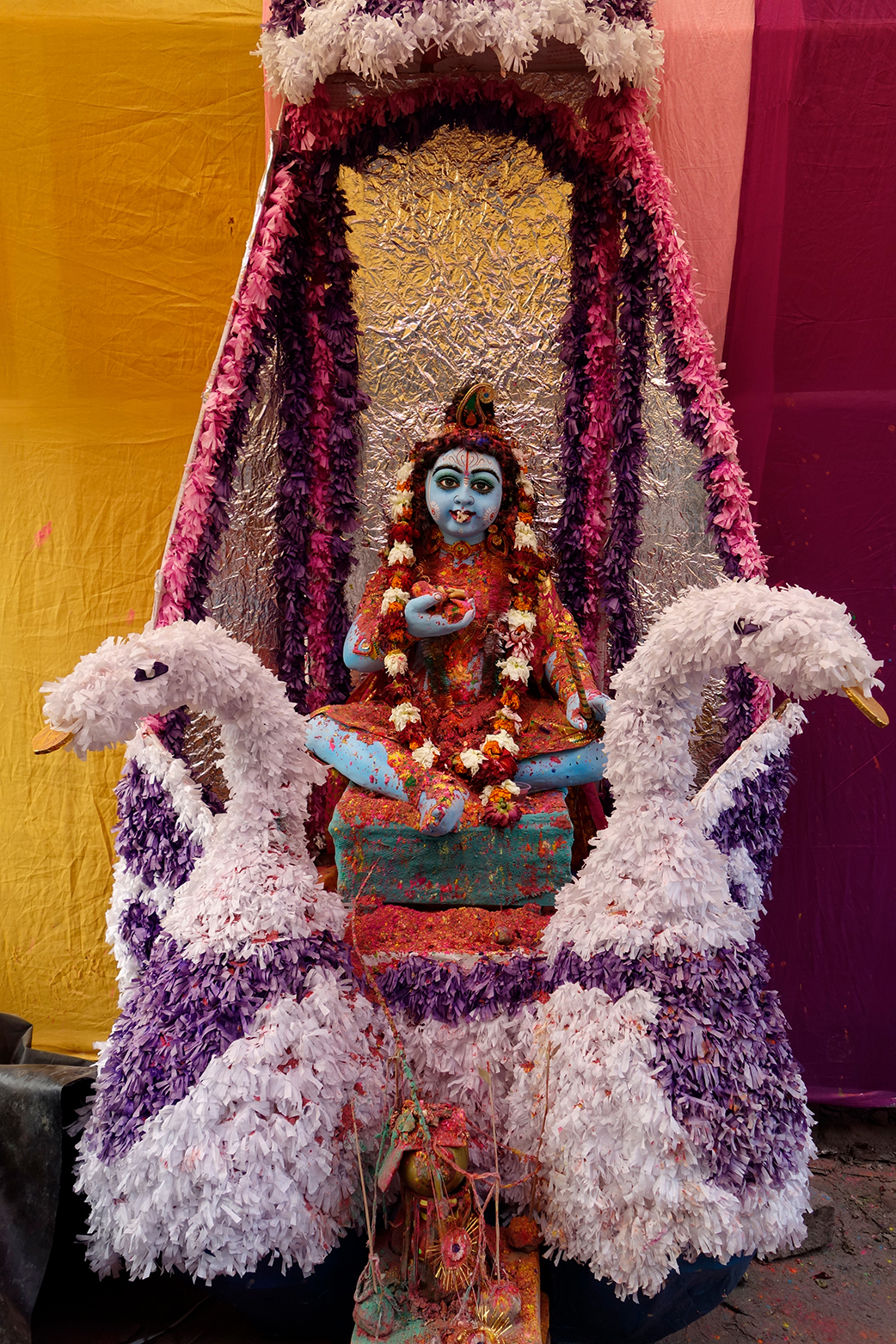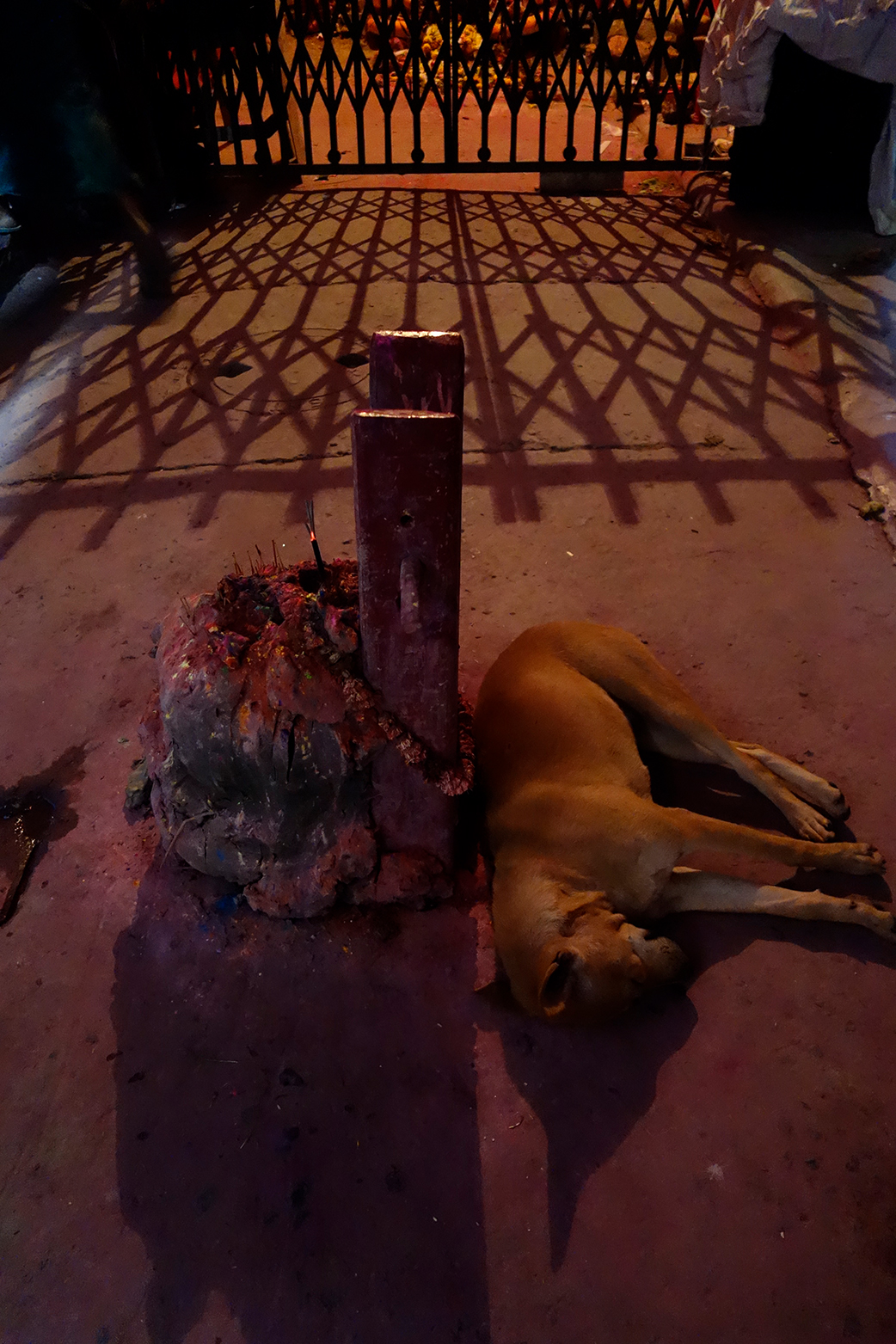WORSHIP
 A temple in the heart of Kumartuli: Kali standing on her consort, Shiva, who lies prostrate beneath her
A temple in the heart of Kumartuli: Kali standing on her consort, Shiva, who lies prostrate beneath her Huge idols of Gopal (child form of Lord Krishna) sit out on the road next to the Hooghly River
Huge idols of Gopal (child form of Lord Krishna) sit out on the road next to the Hooghly River
I have an interpreter for the duration of the research trip which is an essential enabler, though not without its limitations. The artisans don’t speak English and my Bengali equals their English. Debasrita is an attractive, young 25 year old. She is well-educated and from a successful family. She has her own driver, she tells me, and so is not used to having to think about journeys, distances and place-spatial relationships, things I have tasked her to help me with (my knowledge of how to navigate this vast City being far worse than hers). Having drivers and housekeepers is not uncommon in swathes of the developing world for upper middle-class families but this intimate, familial power system is not something I’m used to from my own British, suburban upbringing. My parents may have pushed through the working-class ceiling but their roots are still there. Though her parents are relatively liberal about drinking, smoking and partying (as long as it’s in Kolkata), she is not allowed to travel abroad without her family and is also respectful of that decision. In contrast, at 16 I was
sneaking off to raves at Q Club in Birmingham and partying at Crazy Daisy’s near Coventry, though perhaps not the best ideas with hindsight.
The structures of the Hindu faith (both localised and universal) are complicated and today Debasrita starts to explain to me the relationships between the Hindu gods/goddesses. Hinduism is a pantheistic religion: It equates God with the universe. Yet Hindu religion is also polytheistic: populated with myriad gods and goddesses who personify aspects of the one true God, allowing individuals an infinite number of ways to worship based on family tradition, community and regional practices. Durga Devi is one of the main goddesses celebrated in Kolkata. She is a powerful, even frightening goddess who fights fiercely in order to restore dharma (moral order). Yet, while Durga is terrifying to her adversaries, she is full of compassion and love for her devotees.
The structures of the Hindu faith (both localised and universal) are complicated and today Debasrita starts to explain to me the relationships between the Hindu gods/goddesses. Hinduism is a pantheistic religion: It equates God with the universe. Yet Hindu religion is also polytheistic: populated with myriad gods and goddesses who personify aspects of the one true God, allowing individuals an infinite number of ways to worship based on family tradition, community and regional practices. Durga Devi is one of the main goddesses celebrated in Kolkata. She is a powerful, even frightening goddess who fights fiercely in order to restore dharma (moral order). Yet, while Durga is terrifying to her adversaries, she is full of compassion and love for her devotees.
Durga Puja is one of the most famous festivals celebrated in West Bengal and particularly in Kolkata, in honour of goddess Durga during the period of Navaratri, in October. It is estimated there are upwards of 4,000 Durga Puja pandals (lavish, temporary pavilions erected to worship Durga), open to millions of visitors, scattered throughout Kolkata during the festival, nearly all of the idols for which are produced here in Kumartuli.
As well as seeing the idols in production on every street of the district, there are also many small temples. It makes sense, given the industry of the area. As we walk, Debasrita gives me a who’s who and helps me to understand the stories behind the representations I’m looking at.
Saturday 14th March 2020

Block for animal sacrifice, no longer used:
This dog doesn’t know how close to
death he is whilst sleeping
This dog doesn’t know how close to
death he is whilst sleeping
British Council and City of Culture 2021, Coventry - International Changemakers, 2020